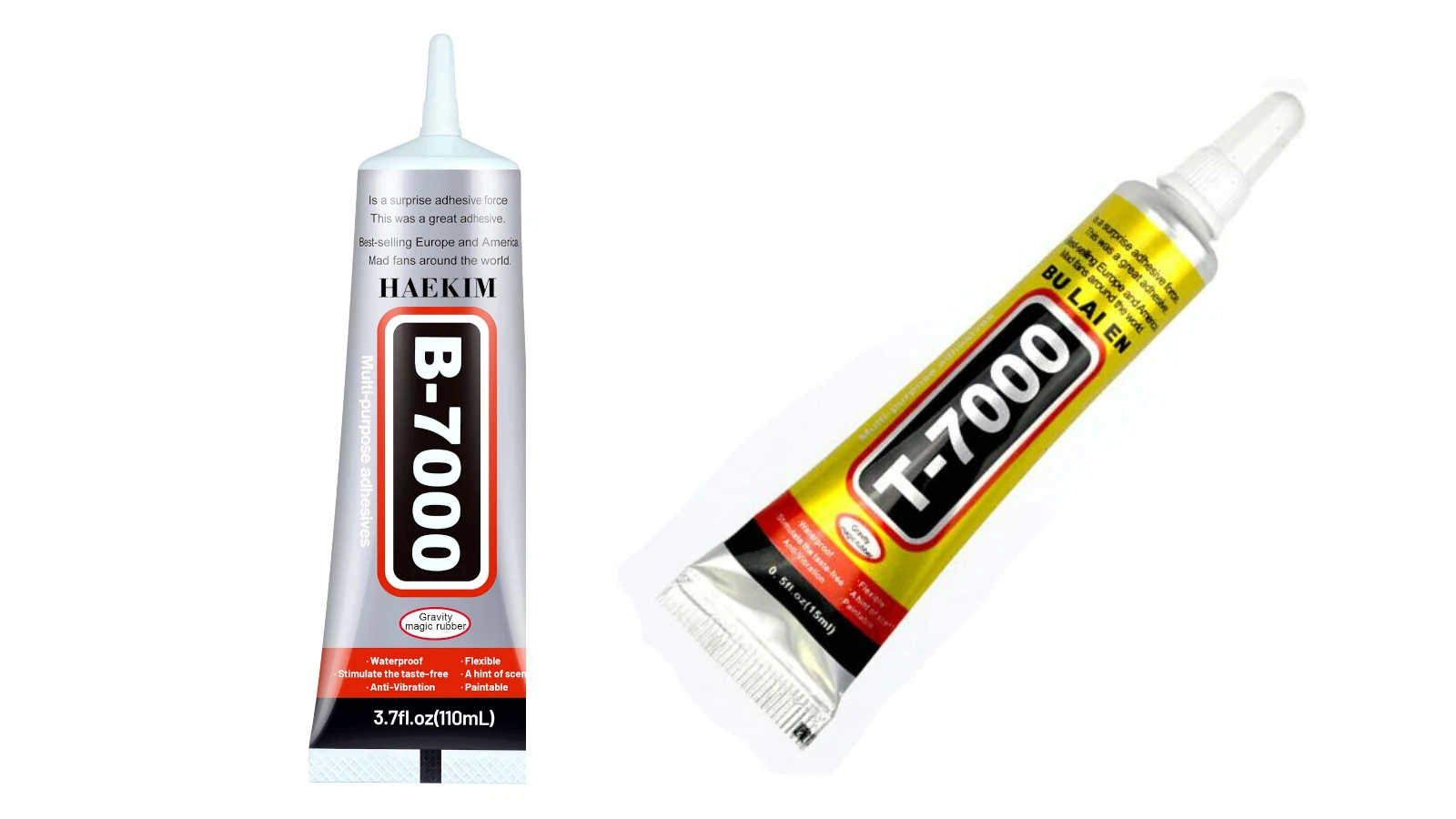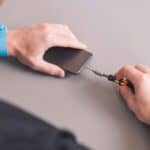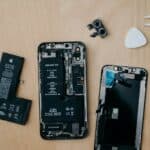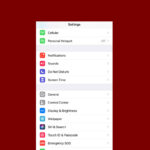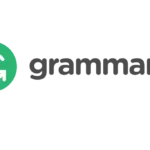B7000 and T7000 are powerful adhesives used for various repair tasks. These versatile glues have gained popularity among DIY enthusiasts and professionals alike. Both B7000 and T7000 offer strong bonding capabilities for electronics, jewelry, and craft projects, but they have key differences in their properties and applications.
B7000 is known for its clear appearance and flexibility after curing. It works well on many materials, including plastic, metal, and rubber. T7000, on the other hand, is specifically designed for electronic repairs and offers enhanced conductivity. This makes it ideal for fixing circuit boards and other electrical components.
When choosing between B7000 and T7000, consider the specific needs of your project. B7000 excels in general repairs, while T7000 shines in electronics work. The table below highlights some key features of each adhesive:
| Feature | B7000 | T7000 |
|---|---|---|
| Color | Clear | Black |
| Best for | General repairs | Electronics |
| Conductivity | Low | High |
| Flexibility | High | Medium |
B7000 vs. T7000: Choosing the Right Repair Adhesive
B7000 and T7000 are popular multi-purpose adhesives often used for phone screen repairs, DIY crafts, and other bonding needs. While they share similarities, there are key differences to consider when choosing the right one for your project.
B7000: The Versatile All-Rounder
B7000 is a self-leveling adhesive that dries clear and flexible. It’s known for its strong bonding capabilities and versatility.
- Pros:
- Bonds various materials (glass, metal, plastic, fabric).
- Waterproof and shockproof.
- Easy to apply with a fine nozzle.
- Relatively inexpensive.
- Cons:
- Strong odor.
- Can be messy if not applied carefully.
- Takes longer to cure fully.
T7000: The Heavy-Duty Champion
T7000 is a thicker adhesive that offers even stronger bonding and better resistance to harsh conditions.
- Pros:
- Superior bonding strength.
- Resistant to high temperatures and chemicals.
- Ideal for demanding repairs and industrial applications.
- Cons:
- Thicker consistency can make it harder to apply precisely.
- More expensive than B7000.
- Requires longer curing time.
Key Differences: B7000 vs. T7000
| Feature | B7000 | T7000 |
|---|---|---|
| Viscosity | Thinner, self-leveling | Thicker |
| Bonding Strength | Strong | Very strong |
| Flexibility | More flexible | Less flexible |
| Odor | Strong | Moderate |
| Curing Time | 24-72 hours | 24-48 hours |
| Price | Lower | Higher |
Choosing the Right Adhesive
- Phone Screen Repairs: B7000 is generally preferred for its flexibility and ease of application.
- DIY Crafts: Both adhesives can be used, depending on the project’s needs. B7000 is suitable for general crafts, while T7000 is better for projects requiring high strength and durability.
- Industrial Applications: T7000 is often the preferred choice for its superior bonding and resistance to harsh conditions.
Safety Precautions
- Ventilation: Work in a well-ventilated area due to the strong odor of these adhesives.
- Skin Contact: Avoid direct skin contact. Wear gloves if necessary.
- Eye Protection: Wear eye protection to prevent accidental splashes.
Proper Application Tips
- Clean Surfaces: Ensure surfaces are clean and dry before applying the adhesive.
- Apply Evenly: Use a thin, even layer of adhesive for optimal bonding.
- Curing Time: Allow sufficient curing time before using or handling the repaired item.
E6000: Another Option for Craft and Repair Projects
E6000 is another popular adhesive that offers strong bonding and flexibility. It’s known for its versatility and ability to bond a wide range of materials. Consider E6000 as an alternative if you’re looking for a strong and reliable adhesive for your craft or repair projects.
Composition and Properties
B7000 and T7000 are versatile adhesives with distinct chemical and physical characteristics. These properties influence their performance in various applications.
Chemical Characteristics
B7000 and T7000 are both polymer-based adhesives. B7000 is a modified acrylic adhesive, while T7000 is a silicone-based compound. This difference affects their bonding properties and compatibility with different materials.
B7000 offers strong adhesion to plastics, metals, and rubber. It forms a flexible bond that can withstand vibrations and impacts. T7000, on the other hand, excels in bonding glass, ceramics, and some plastics.
Both adhesives are waterproof once cured. They resist moisture and can be used in humid environments. B7000 and T7000 also exhibit good chemical resistance, protecting bonds from solvents and oils.
Physical Attributes
| Property | B7000 | T7000 |
|---|---|---|
| Color | Clear | Black |
| Viscosity | Medium | High |
| Curing Time | 24-48 hours | 10-15 minutes |
| Temperature Resistance | Up to 105°C | Up to 260°C |
B7000 and T7000 differ in their physical appearance and handling characteristics. B7000 is transparent, allowing for clean, invisible bonds. T7000 is black, which can be an advantage for certain applications where visible joints are acceptable.
T7000 has a higher viscosity compared to B7000. This makes T7000 better suited for vertical applications or filling gaps. B7000’s medium viscosity allows for easier spreading and self-leveling.
Curing time is a significant difference between the two adhesives. T7000 sets much faster, making it ideal for quick repairs. B7000 requires longer curing but provides a stronger final bond.
Both adhesives offer excellent flexibility and durability after curing. They can withstand thermal expansion and contraction without cracking or losing adhesion.
B7000 vs T7000 Adhesives
| Feature | B7000 | T7000 |
|---|---|---|
| Purpose | Multi-purpose adhesive for electronics, jewelry, crafts | Primarily for cell phone screen and frame repairs |
| Viscosity | Medium-high | Medium |
| Color | Semi-transparent, yellowish tint | Black |
| Flexibility | Moderate | More flexible |
| Precision | Less precise due to thicker consistency | Easier precision application |
| Curing Time | 3-6 days for full cure | 24-48 hours for full cure |
| Waterproof | Yes | Yes |
| Temperature Resistance | -50°C to 120°C | -50°C to 120°C |
| Odor | Strong | Less noticeable |
Application and Usability
B7000 and T7000 adhesives differ in their application methods and suitability for various materials. These factors influence their usability across different projects and repair tasks.
Adhesion to Materials
B7000 excels at bonding a wide range of materials. It forms strong connections with plastic, glass, leather, metal, wood, ceramic, and fabric. This versatility makes B7000 ideal for crafts and general repairs.
T7000, while also multi-purpose, specializes in cell phone screen and frame repairs. It adheres particularly well to glass and metal surfaces. T7000’s strength lies in electronics repair, creating durable bonds for small components.
Both adhesives perform well on rubber and can be used for shoe repairs. For fabric projects, B7000 is often preferred due to its flexibility after drying.
Ease of Use and Precision
B7000 and T7000 come with precision applicators for accurate placement. B7000 has a slightly higher viscosity, which can make it easier to control for detailed work. Its thicker consistency prevents unwanted drips.
T7000 flows more easily, which aids in self-leveling. This property is beneficial for creating smooth, even bonds on flat surfaces. The lower viscosity of T7000 allows it to penetrate small crevices effectively.
Both adhesives feature nozzles designed for precise application. Users can easily control the amount of glue dispensed, reducing waste and improving accuracy in delicate repairs.
| Feature | B7000 | T7000 |
|---|---|---|
| Viscosity | Higher | Lower |
| Self-leveling | Moderate | Better |
| Precision | Very good | Good |
| Best for | Detailed crafts | Electronics repair |
Use Cases and Versatility
B7000 and T7000 adhesives offer unique properties suitable for various applications. Their distinct characteristics make them ideal for different repair and crafting needs.
Everyday Repairs and Crafts
B7000 excels in everyday repairs and crafts. Its clear appearance makes it perfect for fixing light-colored materials. DIY enthusiasts prefer it for fabric repairs and delicate electronic fixes. B7000’s flexibility allows for some movement after curing.
T7000 shines in projects requiring stronger bonds. Its black color suits darker materials or hidden repairs. This adhesive works well for:
- Fixing shoe soles
- Repairing toys
- Mending broken plastic items
Both glues perform admirably in jewelry making and repairs. They securely attach stones and metal components.
Specialized Applications
T7000 excels in phone repair tasks. Its superior strength makes it ideal for attaching back glass panels. Technicians also use it to secure internal components.
B7000 finds its niche in intricate crafting projects. Its self-leveling property allows precise application. Crafters use it for:
- Attaching rhinestones
- Creating decorative pieces
- Bonding small components in model making
| Adhesive | Best For | Not Recommended For |
|---|---|---|
| B7000 | Fabric, electronics, clear bonds | High-stress joints |
| T7000 | Phone repair, strong bonds, dark materials | Visible repairs on light surfaces |
Both adhesives offer multi-purpose solutions. They cater to different project needs based on required bond strength and appearance.
Safety and Environmental Considerations
B7000 and T7000 adhesives require careful handling. Users should know the health risks and environmental impacts of these products.
Health and Safety
When using B7000 or T7000, wear protective gloves and work in a well-ventilated area. These adhesives contain chemicals that can irritate skin and eyes. Avoid inhaling fumes, as they may cause respiratory issues.
B7000 and T7000 are flammable. Keep them away from heat sources and open flames. Store in a cool, dry place out of reach of children and pets.
If skin contact occurs, wash with soap and water. For eye contact, rinse with water for 15 minutes and seek medical attention. If swallowed, do not induce vomiting. Call a poison control center immediately.
Both adhesives contain volatile organic compounds (VOCs). Long-term exposure to VOCs can lead to health problems. Use these products sparingly and follow manufacturer guidelines.
Environmental Impact
B7000 and T7000 can harm the environment if not disposed of properly. Do not pour them down drains or throw them in regular trash.
These adhesives are not biodegradable. They persist in the environment and can contaminate soil and water. Proper disposal involves taking them to a hazardous waste facility.
Empty containers may still contain residue. Rinse them thoroughly before recycling. Check local regulations for specific disposal instructions.
When using these adhesives outdoors, take care to prevent spills. Clean up any spills immediately to avoid soil contamination.
Consider eco-friendly alternatives for projects that don’t require the strong bonding properties of B7000 or T7000. Water-based adhesives often have less environmental impact.
| Adhesive | Indoor Use | Outdoor Use | VOC Content | Disposal Method |
|---|---|---|---|---|
| B7000 | Yes | Yes | High | Hazardous waste |
| T7000 | Yes | Yes | High | Hazardous waste |
Frequently Asked Questions
B7000 and T7000 adhesives have distinct properties and applications. Users often seek clarity on their differences, strengths, and best uses.
What are the main differences between B7000 and T7000 adhesives?
B7000 creates finer, more precise bonds. It dries clear and remains semi-flexible. T7000 forms smoother, more even bonds. It’s primarily used for cell phone screen and frame repairs.
B7000 suits projects where appearance matters. T7000 works well when a shiny effect is desired.
Can B7000 glue be considered stronger than traditional super glues?
B7000 offers high strength and versatility. It bonds well with various materials including plastics, glass, and metals.
Its flexibility and durability often surpass traditional super glues. This makes it suitable for projects requiring both strength and slight movement.
What specific applications is T7000 glue best suited for?
T7000 excels in electronics repair. It’s ideal for bonding phone screens and frames.
Its properties make it effective for fixing tablets, smartwatches, and other devices. T7000 also works well on metal, glass, and certain plastics.
Is there any significant difference in the bonding strength of B7000 and T7000 glues?
Both adhesives offer strong bonds. T7000 forms a rigid bond, making it suitable for repairs needing firmness.
B7000 provides a semi-flexible bond. This feature allows for slight movement, beneficial in certain applications.
What are the safety considerations when using B7000 or T7000 glues?
Use these adhesives in well-ventilated areas. Wear gloves to avoid skin contact.
Keep away from eyes and mouth. Allow proper curing time before handling bonded items.
How do B7000 and T7000 compare with E6000 adhesive in terms of flexibility and water resistance?
B7000 and T7000 offer good flexibility and water resistance. E6000 is known for its excellent flexibility and strong water resistance.
| Adhesive | Flexibility | Water Resistance |
|---|---|---|
| B7000 | Good | Good |
| T7000 | Moderate | Good |
| E6000 | Excellent | Excellent |
E6000 often surpasses B7000 and T7000 in these aspects. Each adhesive has its strengths for specific applications.
